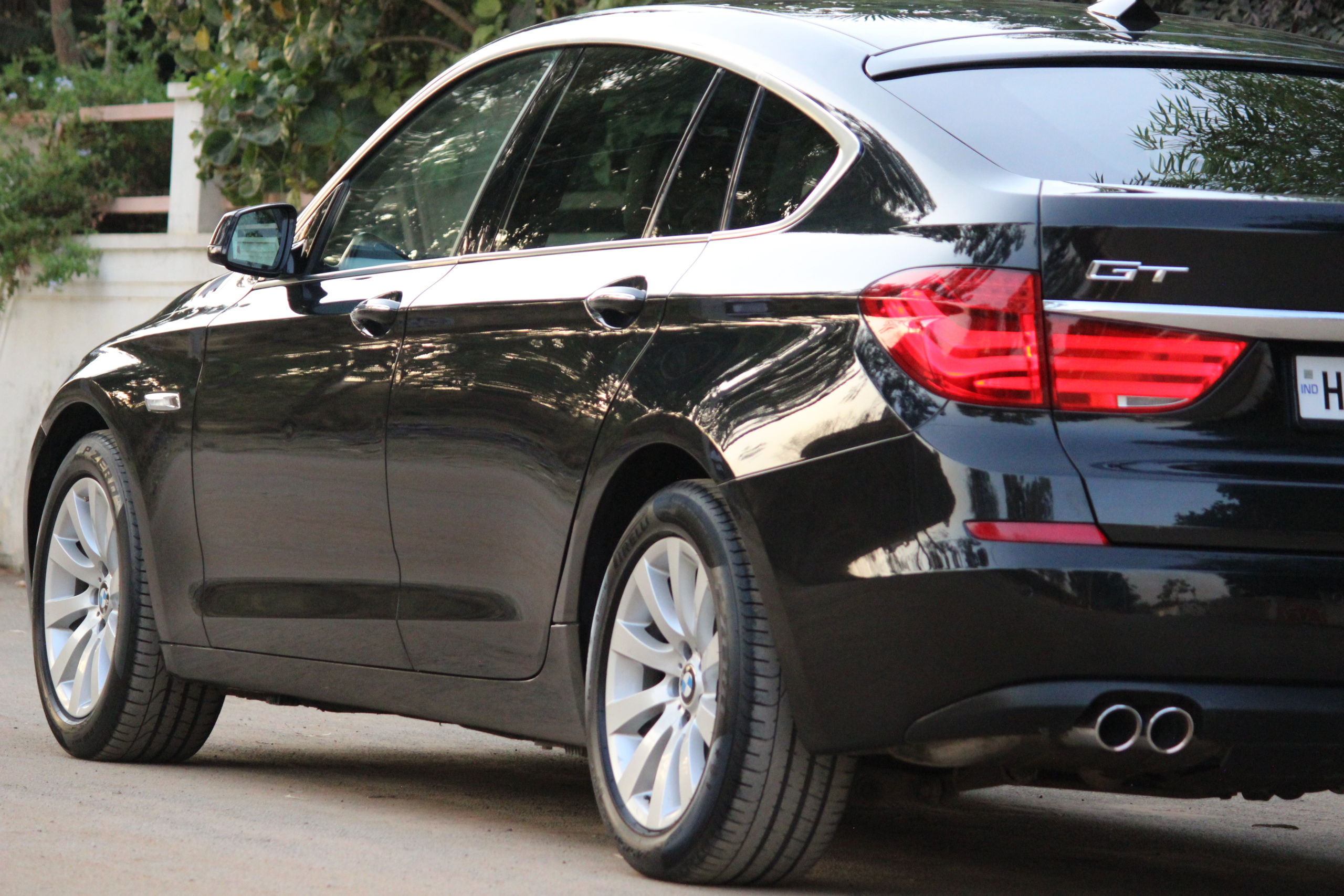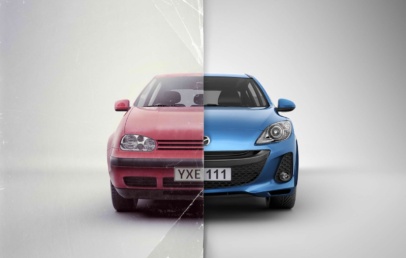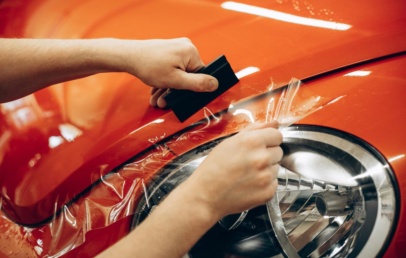
You just bought a new vehicle, and are looking for options to keep the paint looking new and fresh for a long time. You probably came across the term ‘Ceramic Coating’, and slowly descended into the rabbit hole of coatings. In this blog, we’re going to help you get a deeper understanding of coatings, debunk wild claims people make about coatings, and what a coating can and can’t do.
What is a Coating?
A coating is a transparent layer of material that’s applied on top of your existing paint. It acts as a barrier, taking most of the abuse and protecting the paint underneath. Most coatings also decrease surface friction and have hydrophobic properties. This makes maintaining your vehicle a breeze. The ease of cleaning results in less water usage, to learn about an efficient method to maintain a coated vehicle click here. The protective nature, the shine, the durability of a coating is dependent on the type of coating. Let’s take a look at some of the coatings offered at ReflectOn.
Nano Coating?
“Nano” has become the new buzzword. The word “nano” is derived from the Greek word, nanos which means dwarf. When something is Nano, it just means that the material is microscopic. It’s just used as marketing fluff because it sounds cool. It doesn’t tell us anything about the material, just that the material is very small.
Ceramic Coating
Ahh, the ceramic coating, the first coating to enter the Indian market. Ceramic coating introduced detailing to the common folk, that’s not to say that paint protection wasn’t a thing, it was just less known. Ceramic coating changed the outlook of the detailing industry in India. Its amazing properties got many people using it to protect their vehicles. Its main component is SiO2 (Silicon dioxide), which makes the coating adhere to painted surfaces better and for longer than the alternatives at the time. But, like always, technology has advanced making Ceramic Coatings not-so-favorable today. Ceramic coating was an amazing product, but it has some issues. Like the infamous water spotting issue, ceramic tends to have micro defects which makes it brittle, this drastically reduces the longevity of the coating. In our testing, Ceramic coatings’ properties lasted for about 1.5 years. These are some of the reasons we don’t recommend Ceramic coatings.
The chemical formulation of a ceramic coating for cars can vary depending on the specific brand or product. However, the main active ingredient in ceramic coatings is typically a form of silicon dioxide (SiO2) or a related compound such as titanium dioxide (TiO2). These compounds are responsible for the coating’s protective and hydrophobic properties.
Ceramic coatings often contain additional ingredients to enhance their performance, durability, and application characteristics. These may include solvents, resins, polymers, and proprietary additives specific to each manufacturer. The exact formulation and ratio of these components can vary to achieve different desired effects, such as increased hardness, UV resistance, chemical resistance, or self-cleaning properties.
It’s important to note that the specific chemical formulation and proprietary blends of ceramic coatings are often closely guarded by manufacturers as trade secrets, making it difficult to obtain precise details on the exact composition of specific products.
The special additives in ceramic coatings can vary depending on the specific product and manufacturer. These additives are often proprietary formulations that contribute to the unique characteristics and performance of the coating. While the exact composition of these additives is typically not disclosed by manufacturers, some common types of special additives found in ceramic coatings include:
-
Crosslinking Agents: These additives help to enhance the bonding and crosslinking of the coating to the surface, improving its durability and resistance to wear.
-
UV Stabilizers: UV stabilizers are included to enhance the coating’s ability to withstand prolonged exposure to sunlight, reducing the potential for fading, discoloration, or degradation due to UV radiation.
-
Hydrophobic Agents: These additives promote water repellency, causing water to bead up and roll off the surface easily. They help to prevent water spots and make the coating easier to clean.
-
Self-Cleaning Agents: Certain ceramic coatings may incorporate self-cleaning properties by including additives that make the surface resistant to dirt, dust, and other contaminants. This results in easier maintenance and a cleaner appearance for longer periods.
-
Chemical Resistance Enhancers: Some additives are included to improve the coating’s resistance to chemicals, such as acidic or alkaline substances, environmental pollutants, or harsh cleaning agents.
It’s important to note that the specific additives and their functions can vary significantly between different ceramic coating brands and formulations. Manufacturers develop these proprietary additives to differentiate their products and provide unique benefits to the consumers.
Glass Coating
As the name suggests, this coating cures into a glass-like layer after application. Like ceramic coatings, glass coatings are also based on SiO2 (Silicon dioxide) with some slight modifications to the chemical makeup that makes it highly chemical resistant. But it requires another substance to help it bond to the paint, coatings that are based on SiO2 have some form of resin to help it bond to the clear coat. The resin that is used as a “glue” is often not very chemical resistant. Over time, exposure to constant abuse the coating eventually breaks down. In our testing, the glass coating retained its properties for about 2 years. This makes the current version of glass coatings less effective as a long-term protective option.
Graphene Coating
Graphene coating was introduced to address the water spotting and staining issue that ceramic coatings have. Graphene is a relatively new material, it was discovered in 2004 and was mainly used in industrial applications to protect against corrosion. Graphene is just really thinned-out graphite. Once graphite is converted into graphene, it becomes really thin and really strong, yet flexible making it ideal for use as protective coatings. Graphene also has one of the highest water contact angles, making water bead off more easily. This further prevents the formation of water spots.
Graphene by itself has very promising characteristics, it’s highly stable, has very high chemical resistance, has a very high water contact angle, it leaves behind an amazing gloss finish, and is very durable. But wait, there’s a catch. Graphene coatings sold in the market today aren’t pure Graphene. They’re mostly just Graphene powder infused with ceramic coating. Or in some horrific cases, just ceramic coating, with some black dye in it. Graphene coatings are still new, having been in the market since 2019. They are lacking in real-world applications, and have a long way to go. In our testing Graphene coating loses its protective properties around the 6-month mark. They cost more but don’t last, that’s why we wouldn’t recommend you get your vehicle protected with a graphene coating for now. Although we have done a Graphene coat on top of our flagship Rubber coating, more about that in a minute, to significantly increase the gloss and water beading. The top coat lasts for about 6 months, some enthusiasts like the way it shines!
Metal-Oxide coating
Metal-Oxide coating is another attempt at solving the problems that ceramic coatings have. Specifically the water spotting issue. It does that by infusing Antimony Tin Oxide (ATO) with ceramic coating, to act as a thermal barrier. This significantly reduces heat retention, thereby preventing water spotting. The infusion also increases the chemical resistance, which further prevents staining and etching. Metal-Oxide coatings are much more durable than ceramic coatings. In our testing, the metal-oxide coating lasted for about 2 years.
Nano Rubber Coating – Patented by Maxprotect UK
As the name suggests, the coating turns into a rubber membrane after curing. It’s the only coating that has been successful in solving the issues that ceramic coatings have. Being a completely different material, it has a lot of unique properties that make this the go-to coating for automotive enthusiasts. Once fully cured, the rubber membrane is very effective at preventing micro-swirl buildup. As the flexible rubber membrane provides a cushioning effect. It has excellent water repellency and chemical resistance. After application, the rubber coating can only be removed with heavy abrasives. It leaves behind an incredible deep gloss to the surface, it feels super smooth to the touch. The hydrophobicity and the super low surface friction make it one of the easiest coatings to maintain. The downside of this coating is that it requires a lot of skill and manpower to apply. This makes it a professional application only. In our testing, the rubber coating started to lose its hydrophobicity around 4 years after application. However, the hydrophobic properties were restored after decontamination.
PPF Coating?
PPF or Paint Protection Film is a protective film that is applied on the factory paint to help prevent scratches to a higher degree than coatings can. PPF is not a coating, to learn more about PPF click here.
Which one is for me?
Just like every coating is different, every use case is different. The coating you choose should be helpful and must be within your budget. Although rubber coating is the first choice of many enthusiasts. Contact ReflectOn Automotive and let us help you make an informed decision on which coating is right for you.
Disclaimer : The content provided on this blog by Torquoholic is intended for informational purposes only. The views and opinions expressed herein are those of the individual authors and do not necessarily reflect the official policy or position of Torquoholic as a whole.
Some content posted on this blog is created by Torquoholic's team, while other content is derived from various sources on the internet, books, discussions, and knowledge sharing by industry professionals. While we strive to ensure the accuracy and reliability of the information provided, we cannot guarantee its completeness or timeliness.
The information presented on this blog is based on our personal research and understanding of the topic at hand. It should not be interpreted as a comprehensive education on the subject matter. Readers are encouraged to conduct their own research and consult with relevant professionals for specific advice or information.
Torquoholic shall not be held liable for any errors, omissions, or inaccuracies in the content provided on this blog, nor for any actions taken in reliance thereon. We disclaim any responsibility for the content of external websites linked to from this blog.
By accessing and using this blog, you agree to indemnify and hold Torquoholic and its authors harmless from any claims, damages, or losses arising from your use of the information provided herein.
Thank you for your understanding and continued support.




